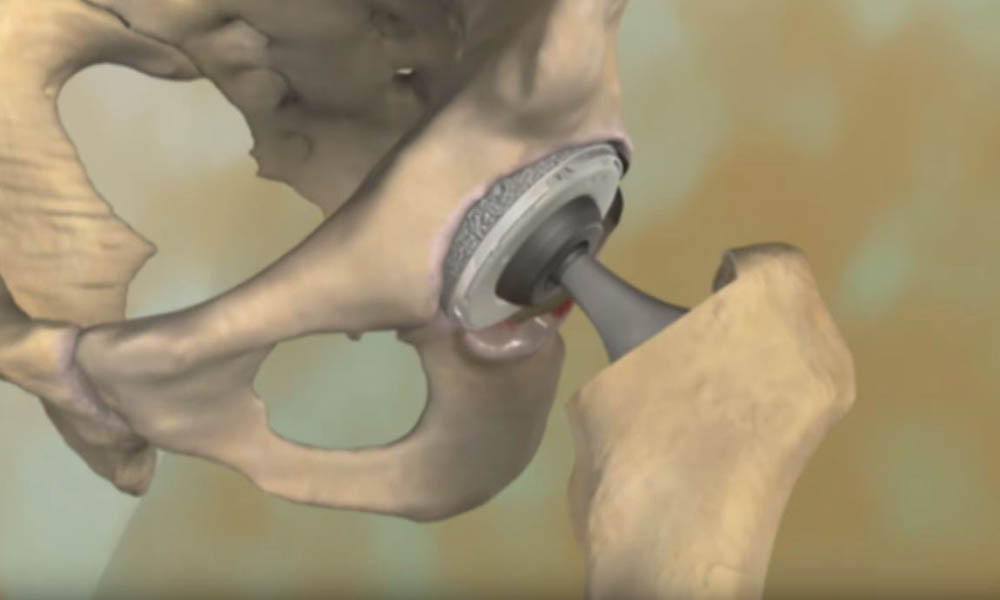Treatment
Total Joint Replacement
This article is an introduction to total joint replacement surgery. Comprehensive information on specific types of joint replacement — such as for the hip, knee, shoulder, or wrist — can be found in separate articles devoted to those topics.
Total joint replacement is a surgical procedure in which parts of an arthritic or damaged joint are removed and replaced with a metal, plastic, or ceramic device called a prosthesis. The prosthesis is designed to replicate the movement of a normal, healthy joint.
Hip and knee replacements are the most commonly performed joint replacements, but replacement surgery can be performed on other joints, as well, including the ankle, wrist, shoulder, and elbow.
Anatomy
A joint forms where the ends of two or more bones meet. There are different types of joints within the body. For example, the knee is considered a "hinge" joint, because of its ability to bend and straighten like a hinged door. The hip and shoulder are "ball-and-socket" joints, in which the rounded end of one bone fits into a cup-shaped area of another bone.
When Is Total Joint Replacement Recommended?
Several conditions can cause joint pain and disability and lead patients to consider joint replacement surgery. In many cases, joint pain is caused by damage to the cartilage that lines the ends of the bones (articular cartilage) — either from arthritis, a fracture, or another condition.
If nonsurgical treatments like medications, physical therapy, and activity modifications do not relieve your pain and disability, your doctor may recommend total joint replacement.
Preparing for Surgery
In the weeks before your surgery, your surgical team and primary care doctor will spend time preparing you for your upcoming procedure. For example, your primary care doctor may check your general health, and your surgeon may require several tests — such as blood tests and a cardiogram — to help plan your surgery.
There are also many things you can do to prepare. Talk to your doctor and ask questions. Prepare yourself physically by eating right and exercising. Take steps to manage your first weeks at home by arranging for help and obtaining assistive items, such as a shower bench, handrails, or a long-handled reacher. By planning ahead, you can help ensure a smooth surgery and speedy recovery.
For a step-by-step guide to planning your joint replacement surgery:
Preparing for Joint Replacement Surgery
Additional information to help you prepare for surgery:
Total Joint Replacement: Questions Patients Should Ask Their Surgeon
Preparing for Surgery: Health Condition Checklist
Surgical Procedure
Total joint replacement surgery takes a few hours. The procedure is performed in a hospital or outpatient surgery center.
During the surgery, the damaged cartilage and bone is removed from your joint and replaced with prosthetic components made of metal, plastic, or ceramic. The prosthesis mimics the shape and movement of a natural joint. For example, in an arthritic hip, the damaged ball (the upper end of the femur) is replaced with a metal ball attached to a metal stem that is fitted into the femur, and a plastic socket is implanted into the pelvis, replacing the damaged socket.
Complications
Your doctor will explain the potential risks and complications of total joint replacement, including those related to the surgery itself and those that can occur over time after your surgery.
Most complications can be treated successfully. Some of the more common complications of joint replacement surgery include infection, blood clots, nerve injury, and prosthesis problems like loosening or dislocation.
Additional information on preventing complications:
Preventing Infection After Joint Replacement Surgery (Video)
Recovery
Recovery and rehabilitation will be different for each person. In general, your doctor will encourage you to use your "new" joint shortly after your operation. Although it may be challenging at times, following your doctor's instructions will speed your recovery.
Most patients will experience some temporary pain in the replaced joint because the surrounding muscles are weak from inactivity, the body is adjusting to the new joint, and the tissues are healing. This pain should resolve in a few months.
Exercise is an important part of the recovery process. Your doctor or physical therapist will provide you with specific exercises to help restore movement and strengthen the joint.
If you have any questions about limitations on your activities after total joint replacement, please consult your doctor.
Long-Term Outcomes
The majority of patients are able to perform daily activities more easily after joint replacement surgery. Most people can expect their joint replacement to last for many years, providing them with an improved quality of life that includes less pain, along with improved motion and strength that would not have been possible otherwise.
Joint Replacement Articles
For more comprehensive information about specific types of joint replacement:
Unicompartmental Knee Replacement
Reverse Total Shoulder Replacement
Last Reviewed
February 2021
Contributed and/or Updated by
Peer-Reviewed by
AAOS does not endorse any treatments, procedures, products, or physicians referenced herein. This information is provided as an educational service and is not intended to serve as medical advice. Anyone seeking specific orthopaedic advice or assistance should consult his or her orthopaedic surgeon, or locate one in your area through the AAOS Find an Orthopaedist program on this website.








